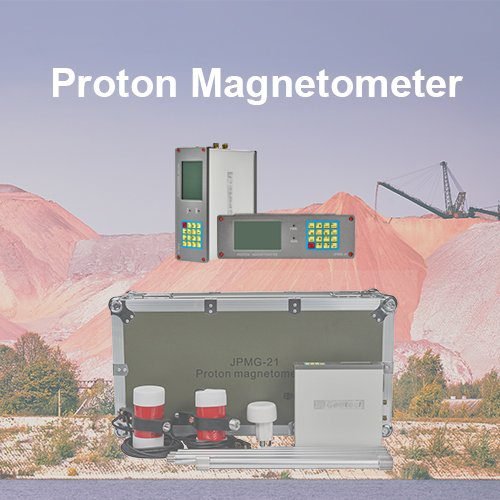Welcome to Geotech!

What is EM Resistivity in Archaeology?
Electrical Resistivity (EM) techniques are essential tools used in archaeology to map and analyze the subsurface, without the need for invasive digging. By measuring the resistance of the ground to the flow of electric current, archaeologists can uncover hidden features such as ancient structures, burial sites, and other archaeological anomalies that lie beneath the surface. This geophysical method plays a significant role in non-destructive archaeological surveys, providing valuable insights into the underground landscape.
Understanding EM Resistivity in Archaeology
Electrical resistivity in archaeology refers to the measurement of the resistivity of the ground using electrical currents. The method involves sending an electrical current into the ground and measuring the resulting voltage difference. Different materials and layers in the soil have varying levels of resistivity, which can be detected and analyzed to infer the presence of buried archaeological features.
In an archaeological context, resistivity measurements can help identify the location and depth of features like walls, foundations, or voids, without disturbing the site. These measurements are typically visualized using 2D or 3D resistivity imaging techniques, which provide a clear representation of the subsurface conditions.
Key Methods in Archaeological EM Resistivity Surveys
- Electrical Resistivity Tomography (ERT): ERT is a technique that uses an array of electrodes placed in the ground to measure resistivity variations at multiple depths. It is especially useful in identifying complex archaeological structures such as buildings, roads, or graves.
- Resistivity Imaging (ERI): This method involves creating 2D or 3D images of subsurface resistivity distribution. It is used to map out archaeological sites with a high degree of accuracy and is ideal for detecting features that are not immediately visible at the surface.
- Induced Polarization (IP): IP is a technique that measures the delayed voltage response of the ground after the current is switched off. This helps in identifying materials with high chargeability, such as certain types of minerals or buried features with different electrical properties.
- DC Resistivity Sounding (DCRS): DCRS is a method where measurements are taken by placing electrodes vertically to measure the resistivity at different depths. It is useful for understanding the stratigraphy of the soil and detecting deeper archaeological features.
- Vertical Electrical Sounding (VES): VES is used to study the vertical variation of resistivity at a specific point. This technique is especially useful in archaeological sites where depth variation is crucial for understanding the stratigraphy or to detect buried tombs or other structures.
Benefits of EM Resistivity in Archaeology
- Non-Destructive Investigation: EM resistivity techniques allow archaeologists to explore and map archaeological sites without damaging them. This is essential in preserving cultural heritage while still gathering useful data.
- High Spatial Resolution: Using high-density electrode arrays, archaeologists can achieve detailed and precise imaging of the subsurface, providing a clear picture of hidden features and structures.
- Depth Profiling: Advanced techniques like ERT and VES can measure resistivity at various depths, allowing archaeologists to gain insights into both shallow and deep features, making it suitable for a wide range of archaeological investigations.
- Comprehensive Site Survey: EM resistivity methods are highly adaptable and can be used across diverse archaeological settings, from urban excavations to remote, undeveloped areas.
Comparison with Other Archaeological Survey Methods
While other geophysical methods like Ground Penetrating Radar (GPR), seismic surveys, and magnetic methods are also employed in archaeology, EM resistivity stands out due to its unique advantages:
- Ground Penetrating Radar (GPR): GPR is excellent for shallow investigations and can provide detailed images of the subsurface. However, its effectiveness diminishes in high-resistivity soils, whereas EM resistivity is effective in a broader range of conditions.
- Seismic Methods: Seismic surveys are effective for deep geological investigations but are less suited for the shallow, precise imaging needed for archaeological sites. EM resistivity, in contrast, offers high-resolution images at shallow to medium depths.
- Magnetic Methods: Magnetic surveys are particularly useful for locating ferrous materials, but they can be limited when it comes to detecting non-magnetic archaeological features. EM resistivity, however, is more versatile and can detect a wider variety of subsurface structures.
Case Study: Application of EM Resistivity in Archaeology
A notable case of EM resistivity in archaeology is its use in the exploration of the ancient city of Pompeii. Archaeologists used Electrical Resistivity Tomography (ERT) to uncover hidden walls and structures beneath layers of volcanic ash. The resistivity data allowed them to create a detailed 3D model of the subsurface, which guided their excavation efforts and helped them avoid disturbing the fragile ruins.
Integration of GIM Series in Archaeological Surveys
As a leading provider of electrical exploration equipment, Geotech Instrument Co., Ltd. offers the GIM Series, which integrates 1D/2D/3D Resistivity Imaging (ERT) and Induced Polarization (IP) capabilities. The GIM Series utilizes high-precision 24-bit A/D conversion and bi-directional cascading technology, breaking the limitations of traditional exploration depths, with a penetration capability of up to 1,500 meters.
- Multi-Scenario Adaptability: The GIM Series supports various archaeological scenarios, from ancient tomb exploration to urban excavation sites. It enables cross-hole, underwater, and 3D distributed cabling, making it versatile for different types of archaeological surveys.
- Intelligent Efficiency: Featuring 10-channel synchronous acquisition and rolling measurement mode, the GIM Series captures multi-electrode data in a single setup, improving operational efficiency.
- Data Compatibility: The GIM Series exports data in TXT/Excel formats, making it compatible with mainstream inversion software like Res2DInv and EarthImager, ensuring easy data processing and analysis.
By integrating the GIM Series into archaeological surveys, researchers can efficiently gather high-resolution, non-destructive data to map and analyze the subsurface, helping preserve and understand ancient structures without compromising the integrity of the site.
-1.png)


